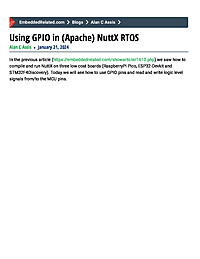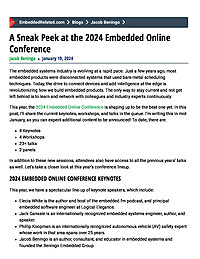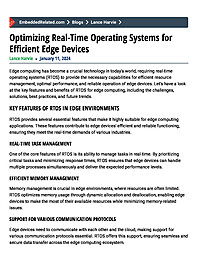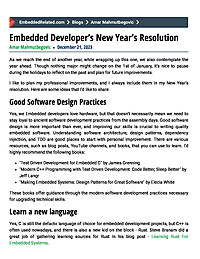
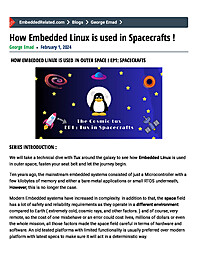
How Embedded Linux is used in Spacecrafts !
This article dives into the application of Linux in spacecraft, examining the challenges it poses and proposing potential solutions. Real-life examples will be discussed, while also addressing the drawbacks of employing Linux in safety-critical missions.
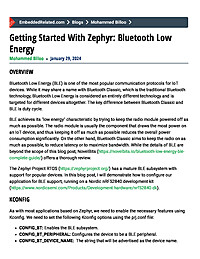
Getting Started With Zephyr: Bluetooth Low Energy
In this blog post, I show how to enable BLE support in a Zephyr application. First, I show the necessary configuration options in Kconfig. Then, I show how to use the Zephyr functions and macros to create a custom service and characteristic for a contrived application.
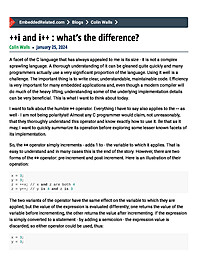
++i and i++ : what’s the difference?
Although the ++ and -- operators are well known, there are facets of their operation and implementation that are less familiar to many developers.
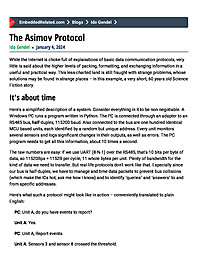
The Asimov Protocol
While the Internet is choke-full of explanations of basic data communication protocols, very little is said about the higher levels of packing, formatting, and exchanging information in a useful and practical way. This less-charted land is still fraught with strange problems, whose solutions may be found in strange places – in this example, a very short, 60 years old Science Fiction story.
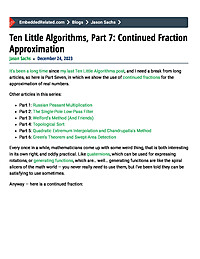
Ten Little Algorithms, Part 7: Continued Fraction Approximation
In this article we explore the use of continued fractions to approximate any particular real number, with practical applications.
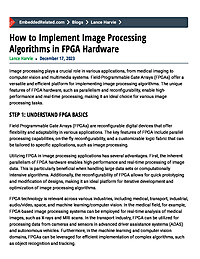
How to Implement Image Processing Algorithms in FPGA Hardware
Recognized for their parallelism and reconfigurability, FPGAs prove ideal for real-time processing in medical imaging and computer vision. The step-by-step approach starts with understanding FPGA basics, emphasizing their reconfigurable nature and parallel processing. It guides users in algorithm selection based on factors like processing speed, resource utilization, and adaptability, then highlights designing modular and scalable algorithms. The process includes simulation for verification, synthesis using tools like Xilinx Vivado and Intel Quartus Prime, interfacing with image sensors, and testing on real hardware. The conclusion underscores FPGA's advantages in image processing, presenting ongoing opportunities for innovation in diverse industries.
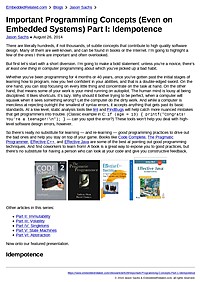
Important Programming Concepts (Even on Embedded Systems) Part I: Idempotence
There are literally hundreds, if not thousands, of subtle concepts that contribute to high quality software design. Many of them are well-known, and can be found in books or the Internet. I’m going to highlight a few of the ones I think...
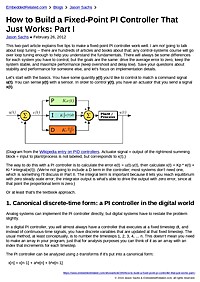
How to Build a Fixed-Point PI Controller That Just Works: Part I
This two-part article explains five tips to make a fixed-point PI controller work well. I am not going to talk about loop tuning -- there are hundreds of articles and books about that; any control-systems course will go over loop tuning enough to...
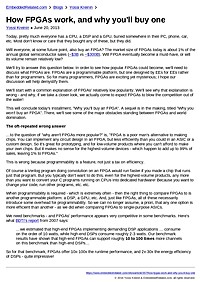
How FPGAs work, and why you'll buy one
Today, pretty much everyone has a CPU, a DSP and a GPU, buried somewhere in their PC, phone, car, etc. Most don't know or care that they bought any of these, but they did. Will everyone, at some future point, also buy an FPGA? The market size...
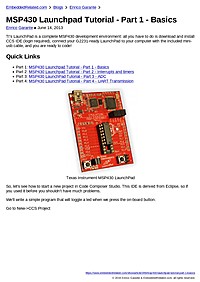
MSP430 Launchpad Tutorial - Part 1 - Basics
TI's LaunchPad is a complete MSP430 development environment: all you have to do is download and install CCS IDE (login required), connect your G2231-ready LaunchPad to your computer with the included mini-usb cable, and you are ready to...
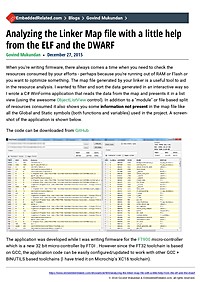
Analyzing the Linker Map file with a little help from the ELF and the DWARF
When you're writing firmware, there always comes a time when you need to check the resources consumed by your efforts - perhaps because you're running out of RAM or Flash or you want to optimize something. The map file generated by your linker is...
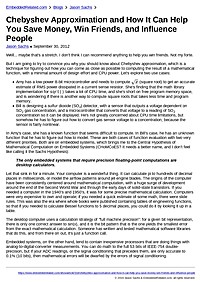
Chebyshev Approximation and How It Can Help You Save Money, Win Friends, and Influence People
Well... maybe that's a stretch. I don't think I can recommend anything to help you win friends. Not my forte. But I am going to try to convince you why you should know about Chebyshev approximation, which is a technique for figuring out how...
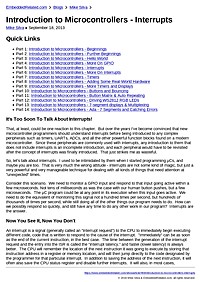
Introduction to Microcontrollers - Interrupts
[quicklinks] It's Too Soon To Talk About Interrupts! That, at least, could be one reaction to this chapter. But over the years I've become convinced that new microcontroller programmers should understand interrupts before being...
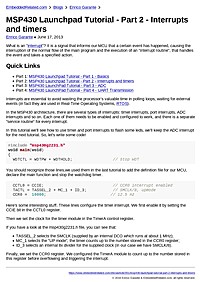
MSP430 Launchpad Tutorial - Part 2 - Interrupts and timers
What is an "interrupt"? It is a signal that informs our MCU that a certain event has happened, causing the interruption of the normal flow of the main program and the execution of an "interrupt routine", that handles the event and takes a...
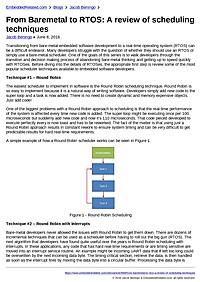
From Baremetal to RTOS: A review of scheduling techniques
Transitioning from bare-metal embedded software development to a real-time operating system (RTOS) can be a difficult endeavor. Many developers struggle with the question of whether they should use an RTOS or simply use a bare-metal scheduler....

How to Implement Image Processing Algorithms in FPGA Hardware
Recognized for their parallelism and reconfigurability, FPGAs prove ideal for real-time processing in medical imaging and computer vision. The step-by-step approach starts with understanding FPGA basics, emphasizing their reconfigurable nature and parallel processing. It guides users in algorithm selection based on factors like processing speed, resource utilization, and adaptability, then highlights designing modular and scalable algorithms. The process includes simulation for verification, synthesis using tools like Xilinx Vivado and Intel Quartus Prime, interfacing with image sensors, and testing on real hardware. The conclusion underscores FPGA's advantages in image processing, presenting ongoing opportunities for innovation in diverse industries.






